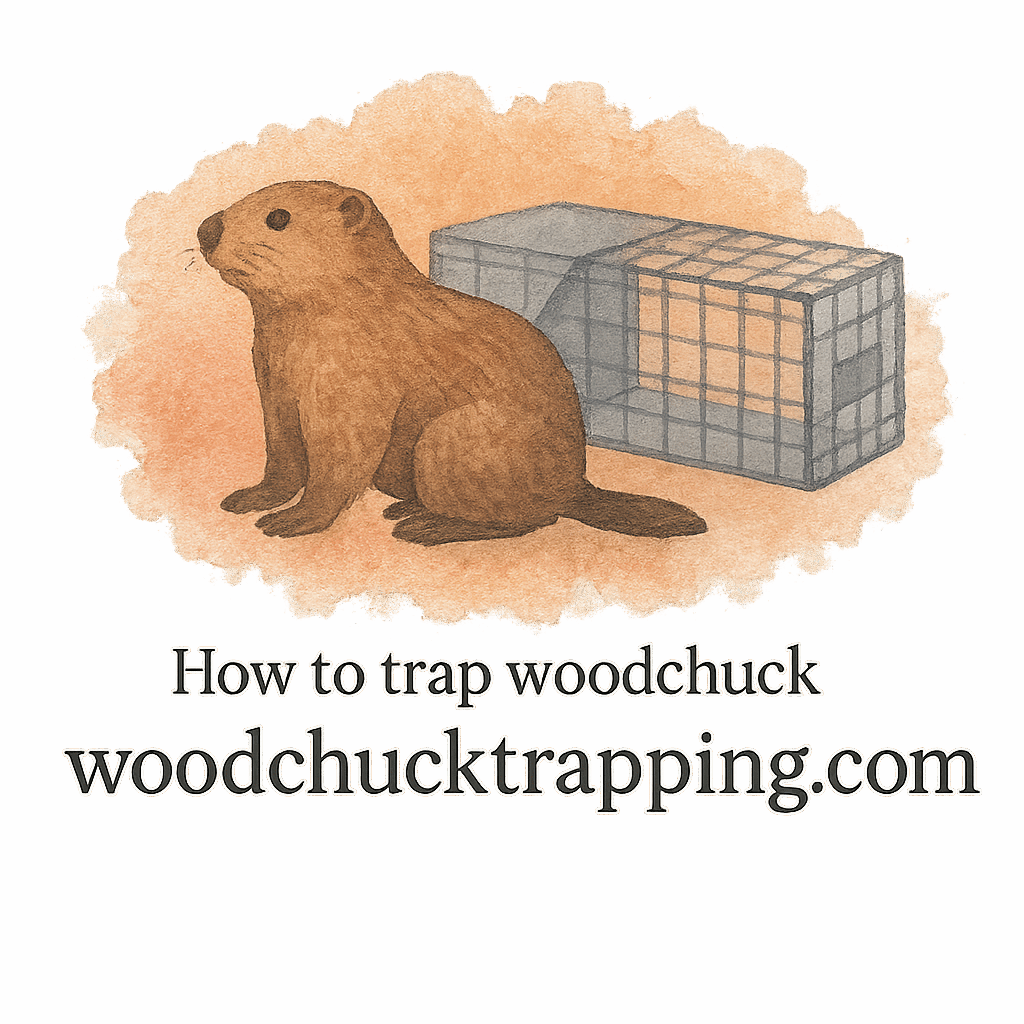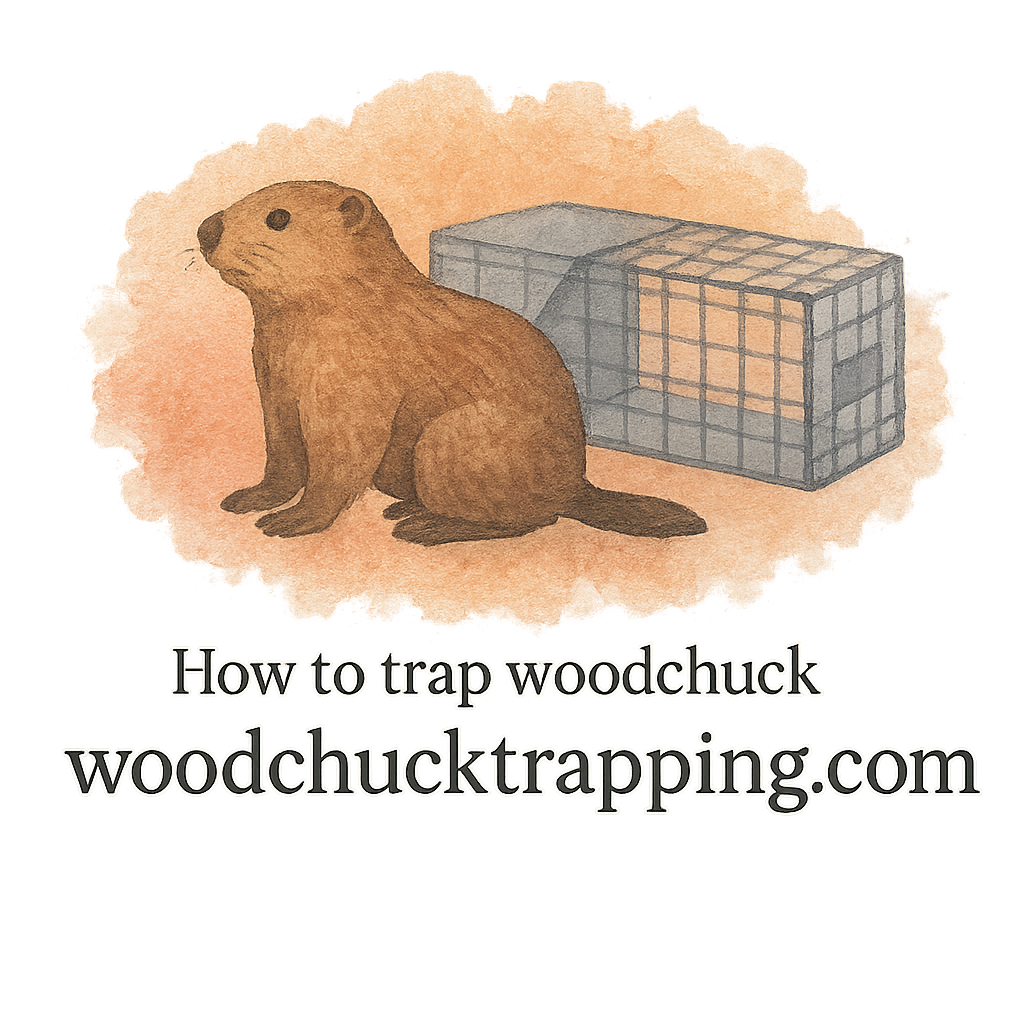Introduction: Why Safety Matters in Woodchuck Trapping
Trapping woodchucks might sound simple—set a trap, wait, and problem solved. But here’s the catch: without proper safety measures, you could put yourself, your family, and even the animal at risk. That’s why safety in woodchuck trapping techniques isn’t just a bonus; it’s essential.
From local laws to handling gear, every detail matters. In this guide, we’ll break down 7 essential safety tips for woodchuck trapping in gardens, so you can protect your space without unnecessary risks.
Understanding Woodchuck Behavior Before Trapping
Before you jump into trapping, you need to understand the enemy. Woodchucks, also known as groundhogs, are notorious for digging elaborate burrows and feasting on gardens.
Signs of Woodchuck Infestation
How do you know if woodchucks are the culprits? Look for:
- Fresh soil mounds near burrows (signs of infestation)
- Gnawed vegetables and plants
- Large, round burrow entrances (10–12 inches wide)
Common Garden Damage Caused by Woodchucks
They can flatten flower beds, chew through crops, and leave behind hazardous tunnels. These burrows often cause yard damage (yard damage guide) that weakens the soil and endangers pets or kids playing outside.
Safety Tip #1: Know the Laws Before You Trap
Trapping isn’t just about skills—it’s about legality. Every state or county may have its own set of rules regarding wildlife control.
State and Local Regulations
Always review your area’s regulations (laws & safety) before setting a trap. Some regions require permits, while others restrict relocation.
Humane Trapping Considerations
It’s not just about following laws—it’s also about ethics. Many areas encourage humane trapping methods that prioritize animal welfare.
Safety Tip #2: Choose the Right Trapping Equipment
The trap you use determines not only your success but also your safety.
Compact Traps for Small Yards
If your garden is limited, compact traps are practical. They fit tight areas while still being effective.
Gloves, Tools, and Handling Gear
Never underestimate the importance of gloves, safe trap gear, and reliable tools. Protective equipment prevents direct contact with the animal and reduces disease risk.
Check out detailed equipment reviews before making a purchase.
Safety Tip #3: Set Traps in the Right Locations
Placing traps correctly is half the battle.
Identifying Burrows and High-Activity Areas
Look for burrows near fences, sheds, or garden corners. Positioning traps along these paths improves efficiency.
Minimizing Risks for Pets and Children
Keep traps away from walkways, play areas, and pet zones. Safety first—your garden shouldn’t become a danger zone.

Safety Tip #4: Use Proper Baiting and Luring Techniques
The bait you choose determines whether the trap succeeds or fails.
Scent Bait vs. Lures
Some trappers swear by scent bait, while others prefer lures. Both work, but using them incorrectly could attract unwanted pests. Learn more in the baiting & luring guide.
Avoiding Overbaiting Mistakes
Less is more. Overbaiting can make traps suspicious or draw in raccoons instead of woodchucks.
Safety Tip #5: Handle Trapped Animals Carefully
Once you’ve caught a woodchuck, the real test begins—how to handle it safely.
Humane Relocation Options
If relocation is allowed, ensure it’s done safely and responsibly. For insights, check resources on humane handling.
Preventing Bites and Injuries
Always use proper protective gear when approaching a trapped animal. Remember, scared animals may bite or scratch.
Safety Tip #6: Prevent Future Infestations
Catching one woodchuck doesn’t mean your garden is safe forever.
Damage Prevention Strategies
Install fencing, seal burrows, and maintain vigilance. Use the prevention & damage guide for long-term protection.
Yard Maintenance Tips
Keep grass trimmed and gardens tidy. Overgrown areas provide shelter, making infestations more likely.
Safety Tip #7: Protect Yourself During the Process
You’re not just protecting your garden—you’re protecting yourself.
Wearing Safety Gear
From heavy-duty gloves to boots, gear matters. A small slip without protective wear can mean a serious injury.
Staying Alert in Tight Spaces
Trapping often requires entering minimal space zones or small yards. Stay cautious and aware of your surroundings.
Common Mistakes to Avoid in Woodchuck Trapping
- Using the wrong size trap
- Ignoring trap scent contamination (woodchucks can detect human smells)
- Forgetting to check traps regularly
- Overlooking trapping essentials like bait, gloves, and relocation tools
Final Thoughts on Safe Woodchuck Trapping
Woodchuck trapping doesn’t have to be risky. By following these 7 safety tips, you’ll protect your garden, yourself, and even the animal. Remember, every step—from choosing traps to preventing future infestations—matters.
For more insights and expert advice, explore the trapping techniques guide and full resources at Woodchuck Trapping.
FAQs
1. What’s the safest trap for woodchucks in gardens?
Compact live traps are generally safest, especially in small yards.
2. How often should I check a trap?
At least once every 12 hours. Leaving animals trapped for too long can be unsafe and inhumane.
3. Can I relocate woodchucks anywhere?
Not always. Check laws & safety regulations in your area before releasing.
4. What bait works best for woodchuck trapping?
Fresh vegetables, apples, and scent bait often work best.
5. Do I need gloves while setting traps?
Absolutely. Gloves prevent trap scent contamination and protect your hands.
6. How do I prevent woodchucks from coming back?
Use fencing, fill in burrows, and follow prevention & damage methods.
7. Is woodchuck trapping safe for pets?
Yes, if you place traps correctly and monitor them regularly. Keep them away from common pet areas.


